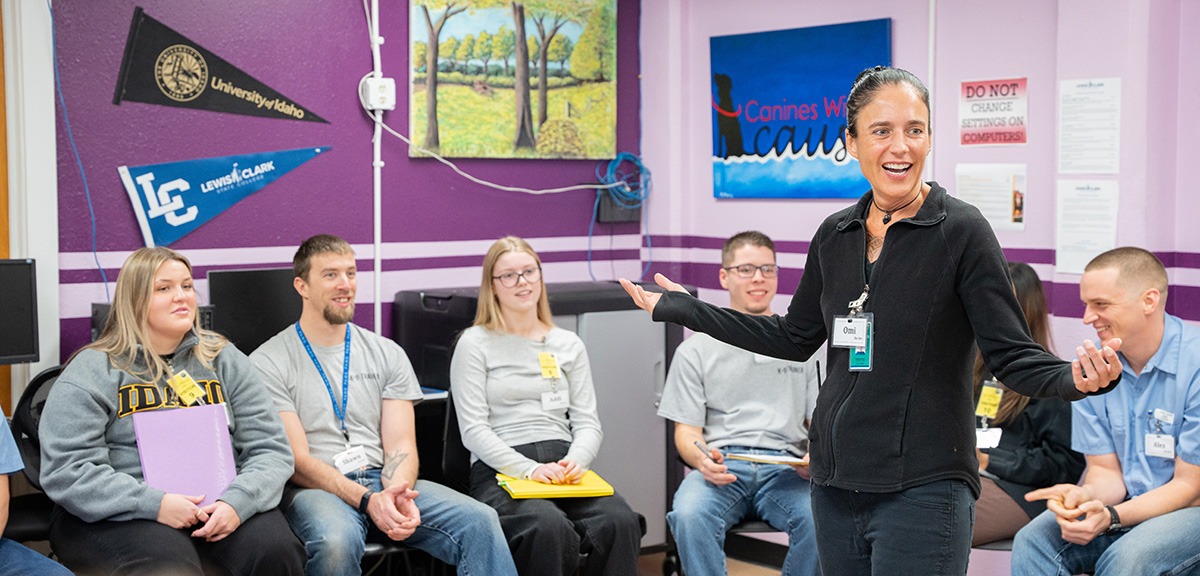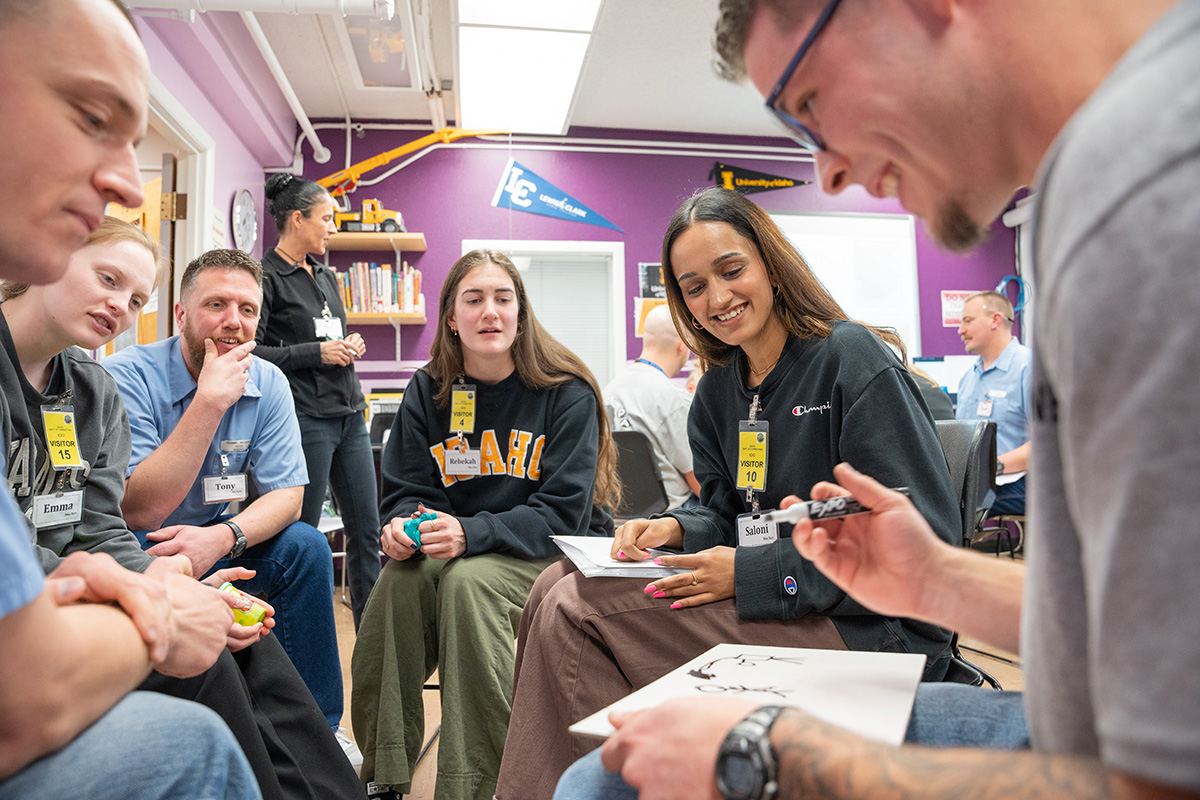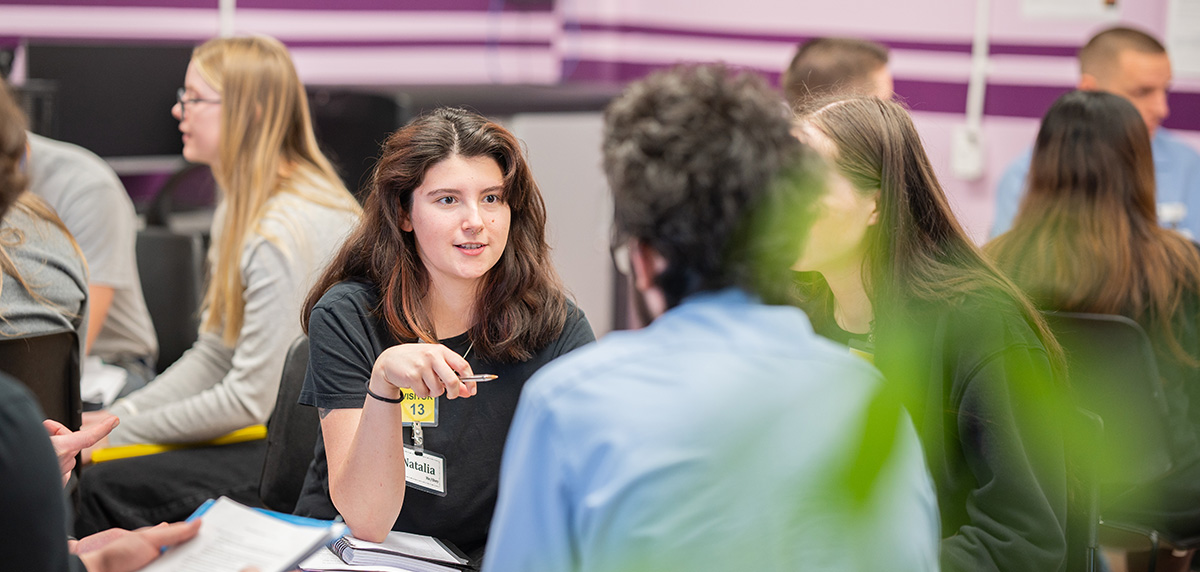Breaking Through Bars to Education
Prison Education Initiative Changes the Trajectory for Incarcerated Students
Article by Leigh Cooper, University Communications
Photos and video by Garrett Britton, University Visual Productions
The United States has only 5% of the world’s population but 25% of the world’s prisoners.
And, of all the states, Idaho is at or near the top in terms of incarceration rates. Most years, Idaho ranks in the top three in the country for prison admissions and prison populations. More than 10,000 Idahoans are currently residing in state prisons, mostly for victimless crimes.
“We are a mass incarceration state in a mass incarceration country,” said Omi Hodwitz, a University of Idaho professor of criminology. “But the strategy of mass incarceration
doesn’t work to reform those who are convicted.”
In fact, upwards of half of those released from prison will engage in crime again within the first year.
But there is a proven way to help people exit the reincarceration cycle — education. Hodwitz and the College of Letters, Arts and Social Sciences (CLASS) started the U of I Prison Education Initiative to present a different future for incarcerated students — a program that also provides educational opportunities for on-campus students.
We are a mass incarceration state in a mass incarceration country. Omi Hodwitz, a University of Idaho professor of criminology
“The steps I have taken on this journey towards a higher education have left me with an incredible sense of accomplishment and a feeling of self-worth never before present in my life,” said one incarcerated student in the program. “As I begin to recognize my potential, there is finally a light at the end of the tunnel, giving me hope for a better future.”
Hodwitz gathered comments from incarcerated students. Students’ names are not used in the story to protect their anonymity.
The Silver Bullet
According to the Department of Justice and the Vera Institute of Justice, offering education in prison can cut reoffending rates nearly in half and the more advanced the education, the lower these rates get. The same applies to victimization rates and government spending.
“It’s a win-win on all fronts,” Hodwitz said. “Offering education to incarcerated communities facilitates a successful transition back into the community. They’re better socialized to integrate and they have knowledge and skills that will help them find good employment.”
Unfortunately, in the 1990s, the federal government canceled all Pell Grant funding for incarcerated students. Pell Grants are federal grants available to low-income students across the nation. When they were revoked for incarcerated students, it reduced prison college programs by 99% within three years.
This is the single greatest thing that happened to me. My life has forever changed for the better, and I now have hope for my future. An incarcerated student
Now, three decades later, the federal government is selectively reintroducing prison-based Pell Grants as part of a national experiment. Recognizing the importance of education in prison, U of I applied to be part of the experiment.
In 2021, the federal government granted U of I access to Pell funding for two prisons in Idaho — the Idaho Correctional Institution-Orofino, a men’s prison, and the Pocatello Women’s Correctional Center. This was the start of U of I’s Prison Education Initiative (PEI), a program that provides educational opportunities to incarcerated communities.
“This program is an important outreach opportunity. It corresponds with our land-grant mission which uniquely positions U of I to serve all our citizens and provide them with greater educational opportunity,” said Sean Quinlan, dean of CLASS and one of the initiative’s biggest supporters.
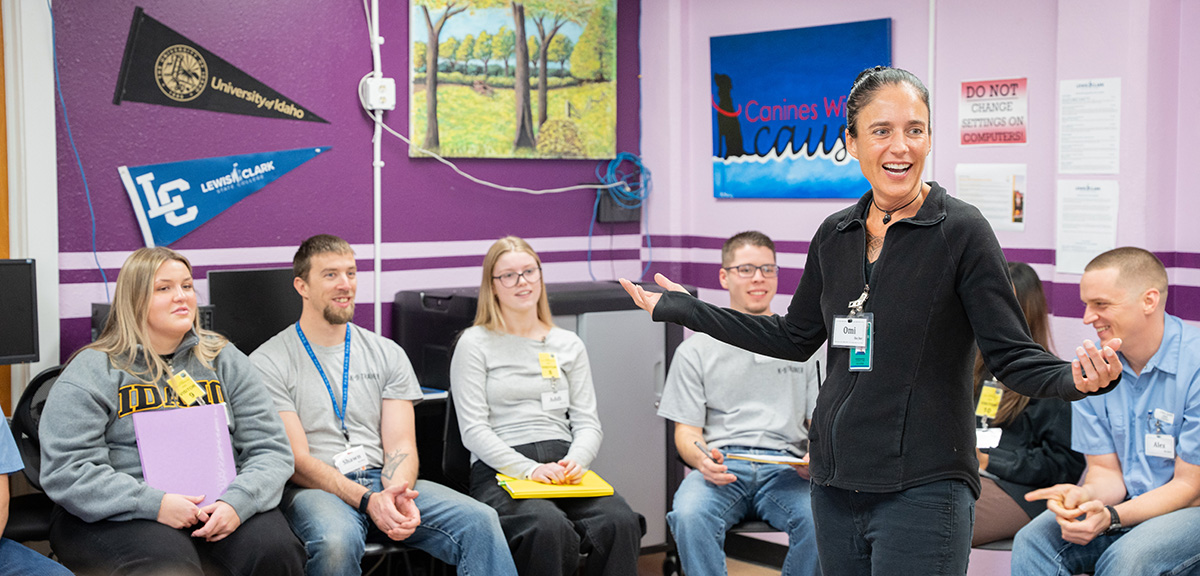
Welcoming All Students
In the fall of 2022, PEI welcomed the first cohort of incarcerated students. Pell students in the PEI program can earn one of three fully online degrees: organizational sciences, communication and general studies.
“This is the single greatest thing that happened to me,” one incarcerated student said. “My life has forever changed for the better, and I now have hope for my future.”
According to Hodwitz, the students are excelling at their coursework, and the program grows every semester. She estimates there are roughly three dozen active PEI students across the two facilities.
“I have seen more people go from hopeless to hopeful because of this program than any other program I have been a part of,” an incarcerated student said.
As of July 2024, the federal government is extending Pell funding to any partnership between educational and correctional institutions that meets the criteria. Including incarcerated students in the Pell Grant program does not reduce the number of grants available because all who are eligible for Pell Grants receive them.
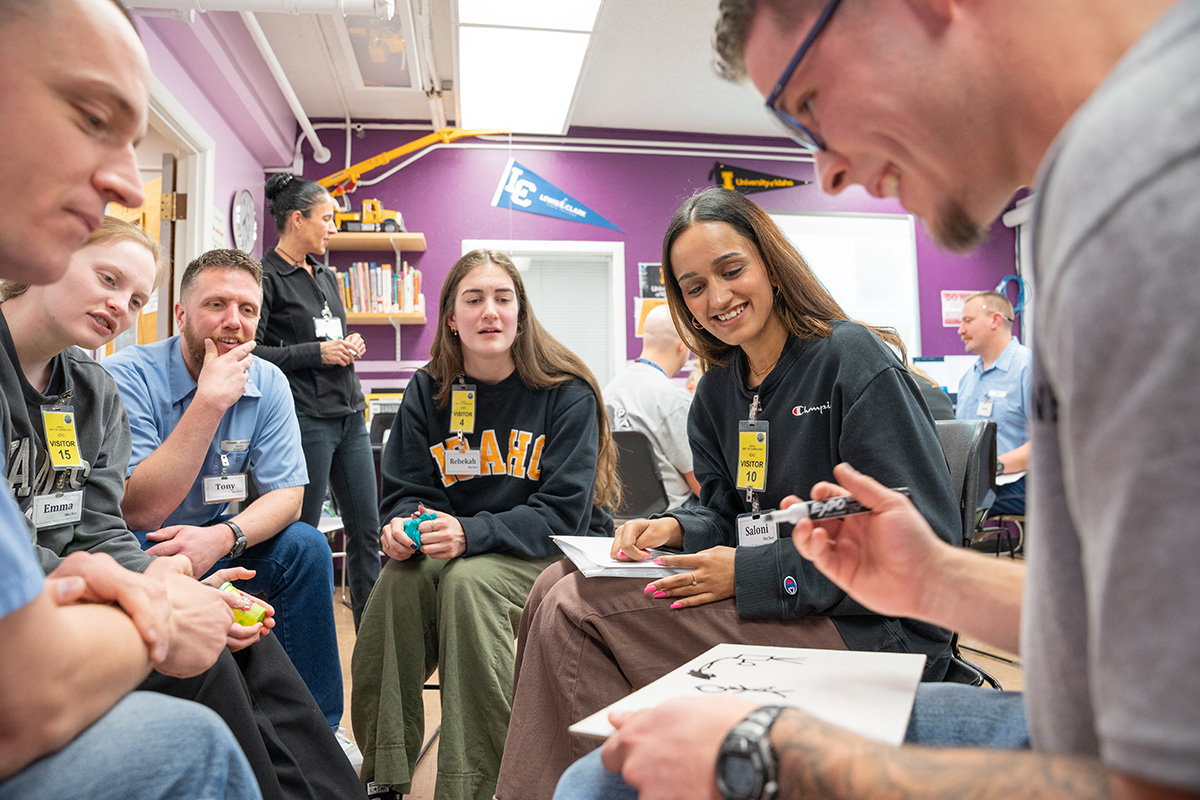
“The U of I’s Prison Education Initiative has greatly affected participating students in a positive way. The benefit is an opportunity for the residents to earn a degree and upon reentry, obtain a job earning a living wage,” said Kent Shriver, the deputy warden of operations at Orofino. “This opportunity is not only changing the lives of the residents, but their families as well. I believe this will have a generational impact helping to break the criminal cycle.”
In Fall 2024, the U of I program will expand to the Idaho State Correctional Center in Boise, the largest prison in Idaho, allowing more incarcerated Idahoans to take advantage of the opportunity the PEI offers.
For Idaho, the benefits could be greater than simply keeping individuals from returning to prison.
“Recidivism damages community cohesion and community safety,” said Hodwitz, on the need for PEI in Idaho. “The pattern of cyclical reincarceration is damaging not just for the individuals who are caught in that cycle, but also for the community and the state. Our program improves community health and success.”
U of I wants to expand access to education to everybody, regardless of their life circumstance and making good on that is really exciting. I feel super privileged to be a part of it. Amara Bailey, a third-year criminology and sociology student
Unlikely Student Partners
PEI doesn’t only affect incarcerated students. It provides opportunities for U of I on-campus students.
Amara Bailey, a third-year criminology and sociology student, works as a PEI intern. Their main job is to plan the second annual Beyond the Wire art show, which features art by the incarcerated community and helps provide funds to incarcerated students for items like transcripts and textbooks.
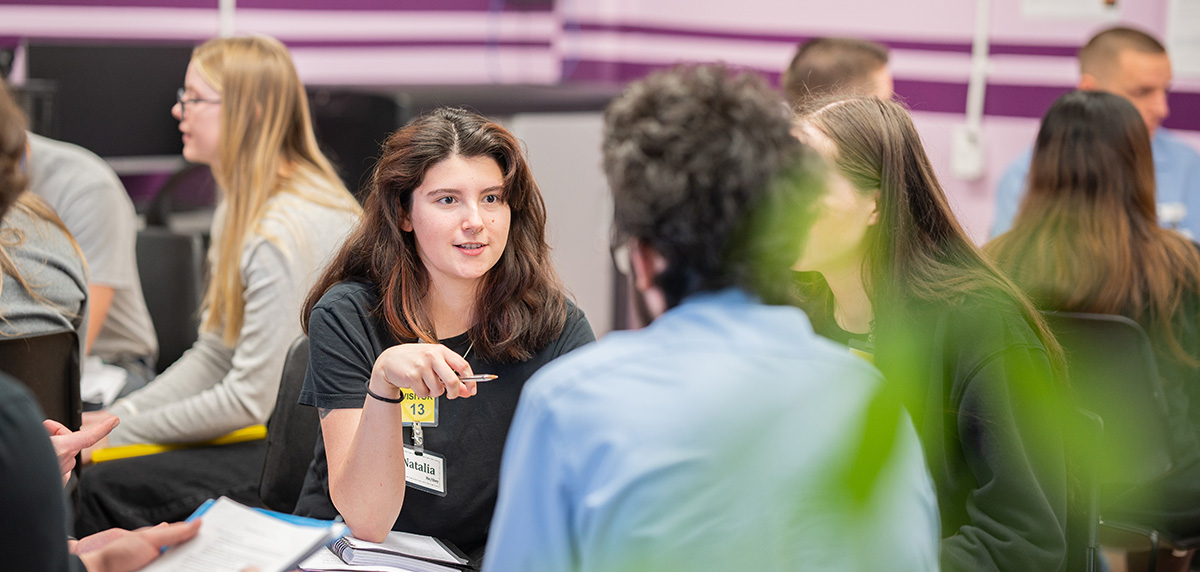
The Moscow native connected with the PEI program through Inside Out, a class that brings on-campus students and incarcerated students together at the prison.
Through Inside Out, “outside” students work on extracurricular academic projects with their “inside” incarcerated peers. These unlikely sets of students have published books and articles together and collaborated on research projects.
As an “outside” student, Bailey worked with an “inside” student on a research project that found that the physical recreation needs of the prisoners were not being met. The duo’s work was presented at an international criminology conference.
“It’s incredible to know that I’m working alongside and learning from people who society has deemed irredeemable and unforgivable — but they are acknowledged by the university,” Bailey said. “U of I wants to expand access to education to everybody, regardless of their life circumstance and making good on that is really exciting. I feel super privileged to be a part of it.”
Published in March 2024.







